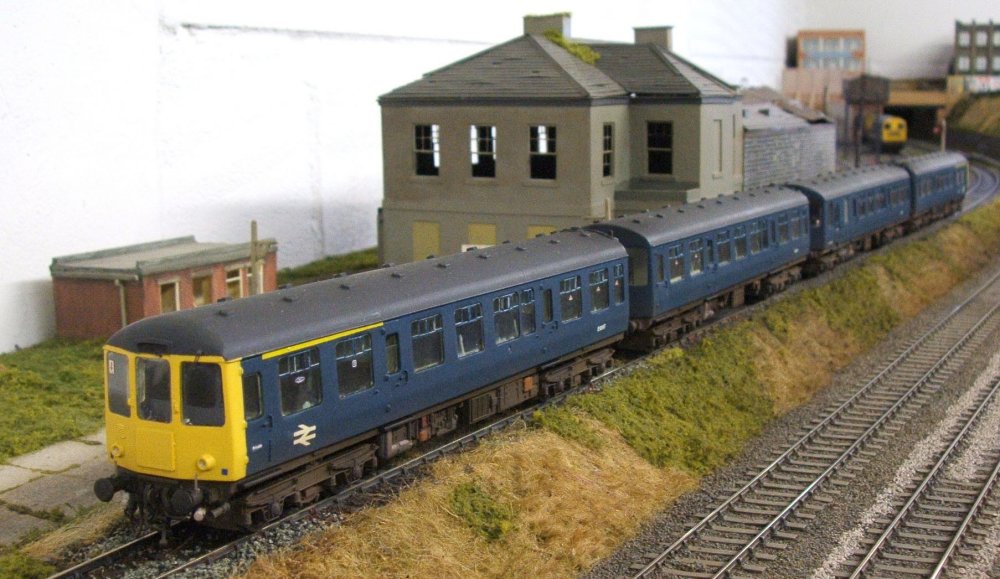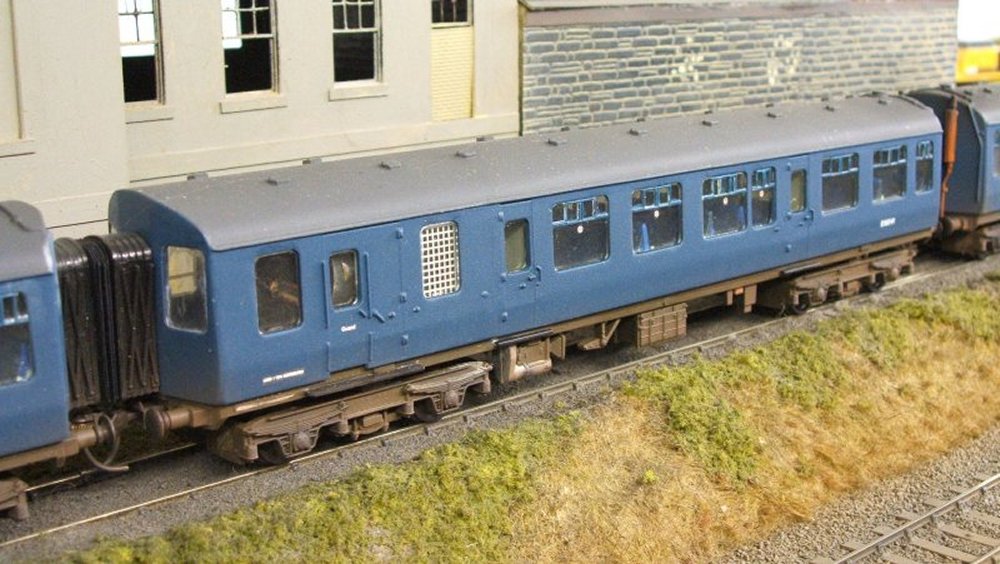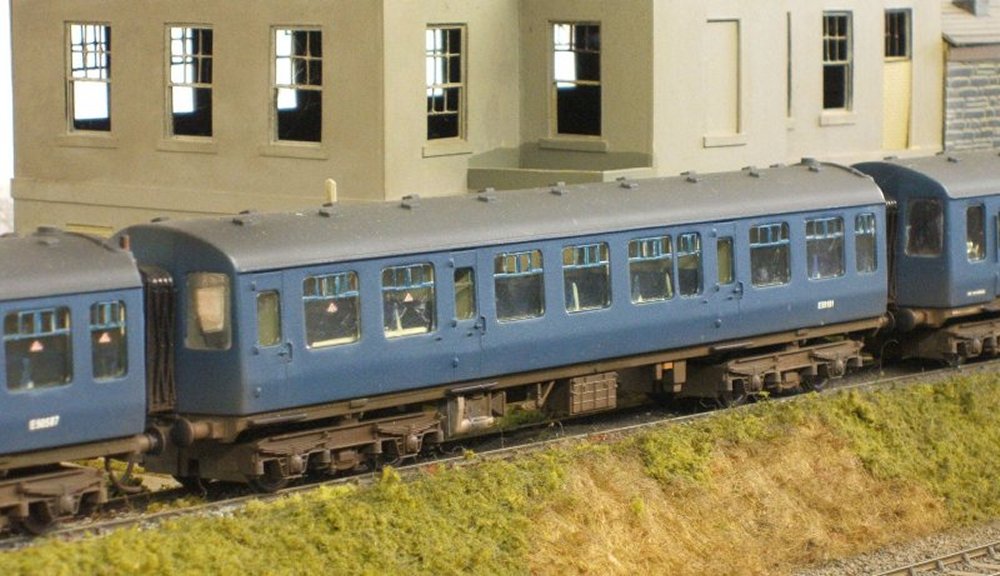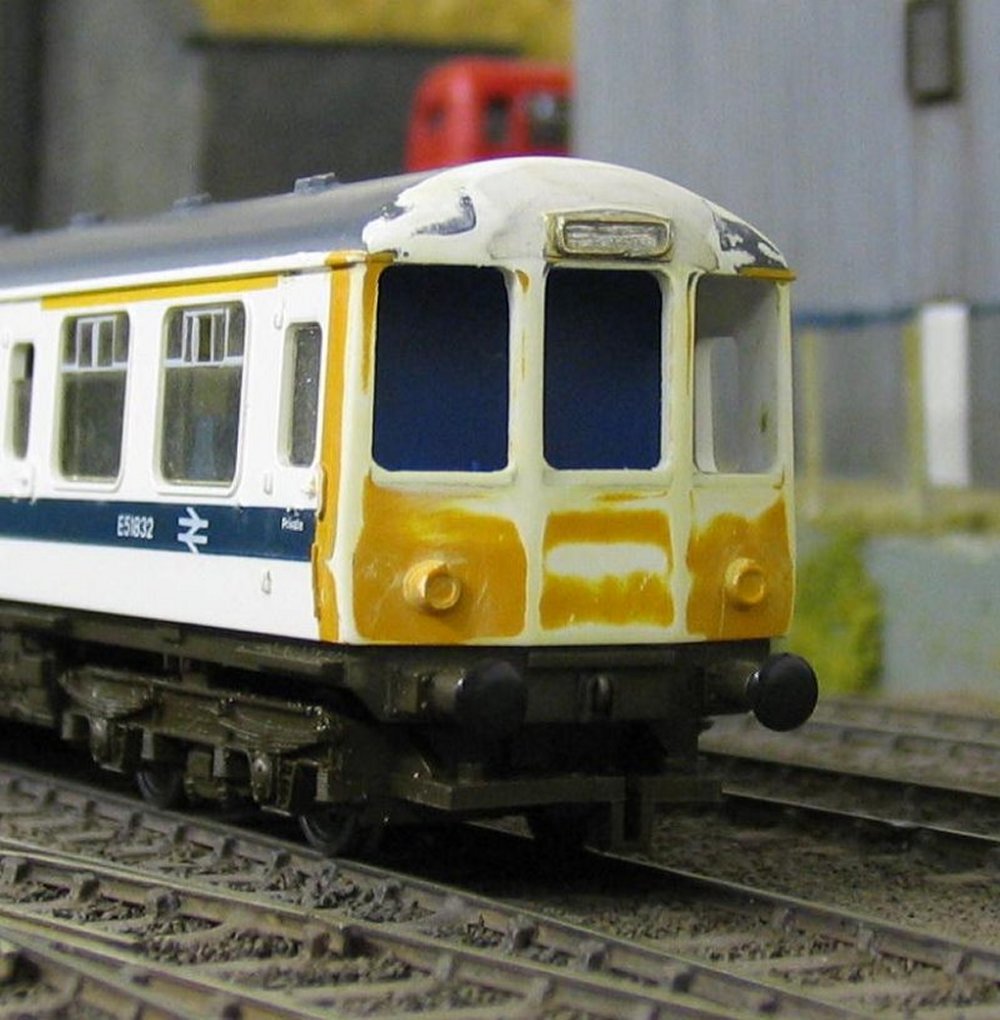*****************************************************************************************************************************************************************
BRCW Class 104 DMU - by Kier Hardy
*****************************************************************************************************************************************************************

The Birmingham Railway Carriage & Wagon Co introduced the Class 104 in 1958, in a variety of
diagrams and formations. This 3-car unit was one of seven sets allocated to Stratford depot
(reformed from ex-North Eastern 4-car sets), operating local services in North & East London
and into Essex during the early 1970s.

The 3-car sets were configured as DMCL-TBSL-DMCL, with some of the driving cars built to
different diagrams. Here is E50576 (dia 559 1st class non-smoking) and E50555 (dia 580
1st class smoking), the only obvious difference being the fitment of ashtrays. With their
blue square coupling code, they were occasionally reformed as hybrid sets with Stratford's
Met-Cam Class 111 units as seen here.

The model utilises a heavily modified Hornby Class 110, with the addition of 3D printed
cab ends, underframe components and roof ventilators, shown here during the painting and
decorating stages.

Bogie footsteps of the 'one-shoe-size' have been formed from plastic section, and the
distinctive fabricated buffers are 3D printed. Operating requirements result in a gap
between the buffers, so the model can negotiate 3ft radius curves.

A broadside shot of TBSL E59212 (dia 584) showing the 3D printed underframe components
and bogie centres moved out to a scale 40ft. All the vehicles in this batch had a luggage
area (at the end opposite the lavatory) resulting in the small window without top light
ventilators. All the door droplights (including the guards door) had a notice pasted,
perhaps relating to clearances on the routes they were used on.

The bogie centres have been increased to a scale 40ft over the Hornby Class 110 model, so
it was decided to dispense with the bogie cradle arrangement and make new pivot points at
160mm on rebuilt crossmembers for the two driving cars. This view shows an unmodified
chassis at the top and the modified chassis below with the slab sided underframe removed.

The original Hornby bogies have been retained, but this has involved a lot of surgery removing
the baseplate and adding a crossbeam with bearing pads to accomodate 3-point suspension.
Brass wire retainers have been added to prevent the wheelsets falling out when picking
the unit up. The centre car has been modified to allow a Railroad motor bogie to be
accomodated in the guards section, with the trailing bogie (and electrical pick-ups) also
mounted at 160mm centres.

The chassis are seen here almost completed and have been test run for a few circuits on the
layout. Kadee buckeye couplers have been fitted without their draft boxes (due to the close
proximity of the repositioned bogies), which will allow the opportunity to run hybrid
formations with other blue square DMUs in the fleet such as Class 105 & 111. The bogies are
now fixed in place with screws, and the underframe details have been 3D printed and affixed to
the strengthened and weighted chassis. The next job on the list is the bodies, as the side
profile needs attention and the beading removed from around the window apertures.

Work on the bodies includes reprofiling to eradicate the horizontal ridge, as well as the
removal of the roof vents and window
surrounds. The interiors have been modified so the partitions are see-through, rather
than the solid bulkhead featured by Hornby. A luggage area instead of the last 2 seats
is about the only other change to the interior... even if some of the 2+3 seating is
handed differently between the Class 104 & the 110 donor. Shown here after a basecoat
awaiting decoration.

Jonny's 3D printed cab ends are designed to suit the bodyshell as produced, so a little
reprofiling is required in this case. Doorways rescribed and replacement roof vents fitted.

After a light primer coat the sides have been marked out for the hinges, and holes
drilled ready for the door and grab handles.

*****************************************************************************************************************************************************************

Other previous conversions have been carried out, utilising the original Hornby Class 110
with its shorter bogie centres and slab-sided chassis.

Class 104 4-car unit by Paul James at Wibdenshaw.

Class 104 TBSL conversion.

Class 104 TSL conversion.

Prior to the 3D printed cabs being available, the front end of a Class 110 is shown here
in the process of being converted into a Class 104.

Painting stage.

Painting stage.

From left to right - A 2-car Class 105 (DC Kits), A 3-car Class 104 (ex-Hornby), and
a 2-car Class 110 posed at Shenston Road.
*****************************************************************************************************************************************************************
























